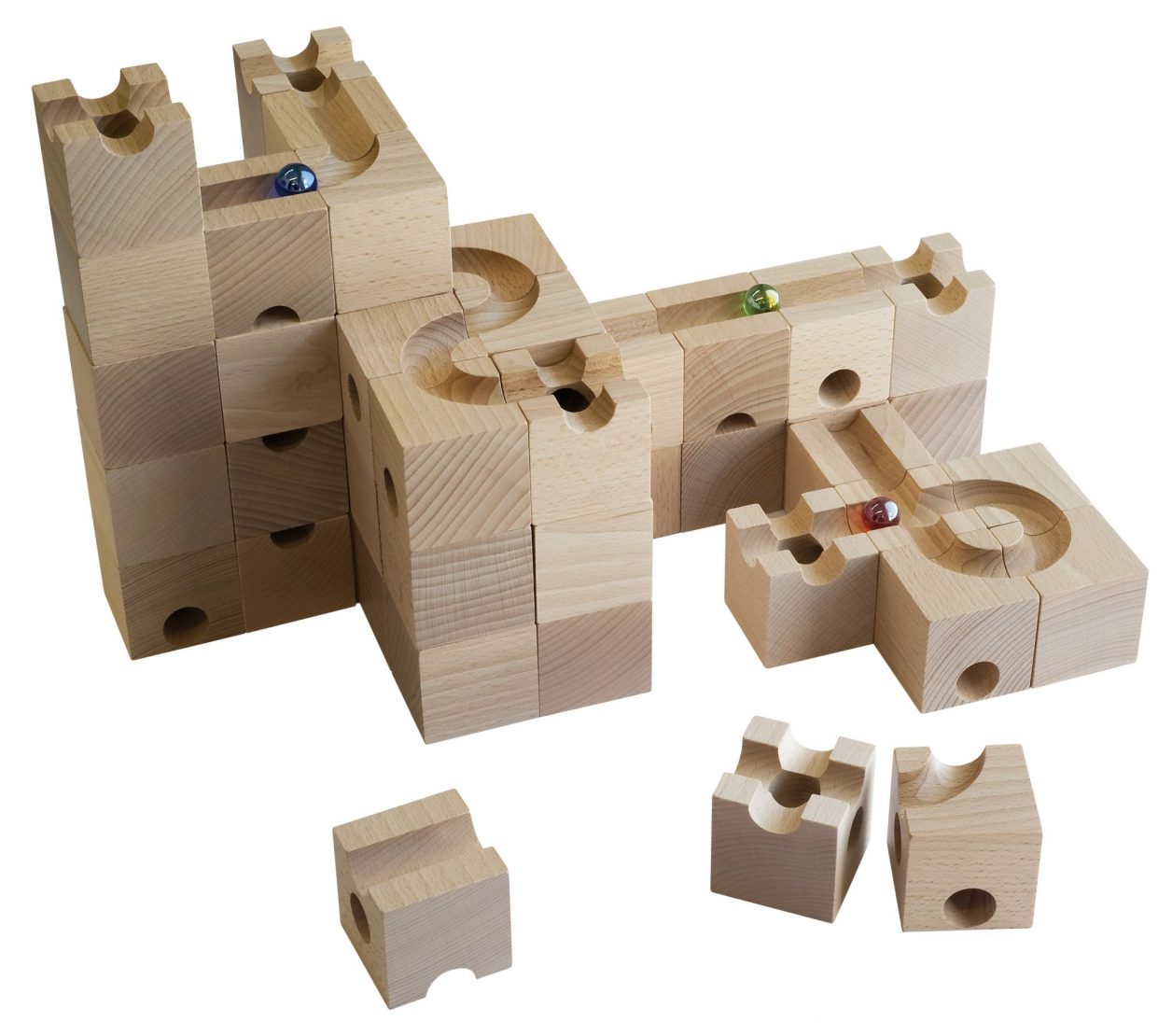Tokyo (SCCIJ) – The children’s toys of the Swiss company cuboro have become so popular in Japan that the products are difficult to obtain in many other parts of the world. The cuboro’s marble track system made of wooden blocks has been well-liked by children and adults for decades. But in Japan, it suddenly turned into a bestseller about one year ago because a sensationally successful teenage shogi player used to build cuboro marble tracks as a child. In 2015, the Swiss company was struggling due to the strong currency of Switzerland. Now, its production cannot keep up with orders.
Hype caused by teenager player
The wooden marble tracks were already available in Japan before the hype and made up about one tenth of the global sales of cuboro, a small company based in Hasliberg Reuti in the canton of Bern. Then, the 14-year-old Japanese teenager Sota Fujii caused such a run on its product in early 2017 that it was completely sold out within days. Until today, demand is much higher than supply.
By becoming the youngest professional shogi player in Japan ever, Fujii broke a 62-year-old record. (Shogi is a more complicated version of the Western game of chess.) The excitement was caused when the teenager told a Japanese television program broadcast in January 2017 that he liked playing in his childhood with cugolino, as the marble track system is called. In the documentary, his mother showed photos of the impressive marble tracks Fujii had built already at the age of three.

Swiss toy popular in Japan
Demand in Japan causes shortage
The middle school student from Aichi started playing shogi at the age of five. The documentary quoted Japanese neuroscientists pointing out a possible connection between the genius of the young player and his passion for the Swiss marble system because the same brain region in charge of three-dimensional image production is active in building the tracks and developing a shogi winning strategy. This implied that playing with cugolino improves spatial imagination and thus improves shogi skills.
Since then, many Japanese parents and grandparents also have been wanting to stimulate that particular brain region of their children and grandchildren with cugolino. According to a report in the Swiss newspaper Neue Zürcher Zeitung, Japanese investment companies are buying the cuboro product boxes wherever they are available worldwide in order to satisfy the demand at home. This causes the cugolino maker nightmares because for quality reasons, an increase of production is difficult, cuboro manager Matthias Etter told the paper.
Building blocks for marble tracks
According to the information on the cuboro website, the game was developed in 1976 by Etter when working with special-needs schoolchildren. He extended and marketed it as a family game in 1985 with twelve basic elements. The cuboro marble track system production start dates back to 1986.
Under the label “cuboro the marble track for a lifetime” the Swiss company cuboro Ltd., founded in 1997 with headquarters in Hasliberg Reuti in the canton of Bern, distributes the cuboro marble track system. It is made exclusively of Swiss beech wood in the specialized family joinery Nyfeler Holzwaren in the Emmental-Oberaargau region. Etter still runs the company together with his wife Barbara.
Today, cuboro is not “only” played for disport, but is also used as teaching material, in scientific studies on spatial imagination, in occupational therapy, in team trainings, for aptitude tests, in promotional concepts, in theme parks and for championships, the company says.
Text: Martin Fritz for SCCIJ; Photo: Cuboro





























